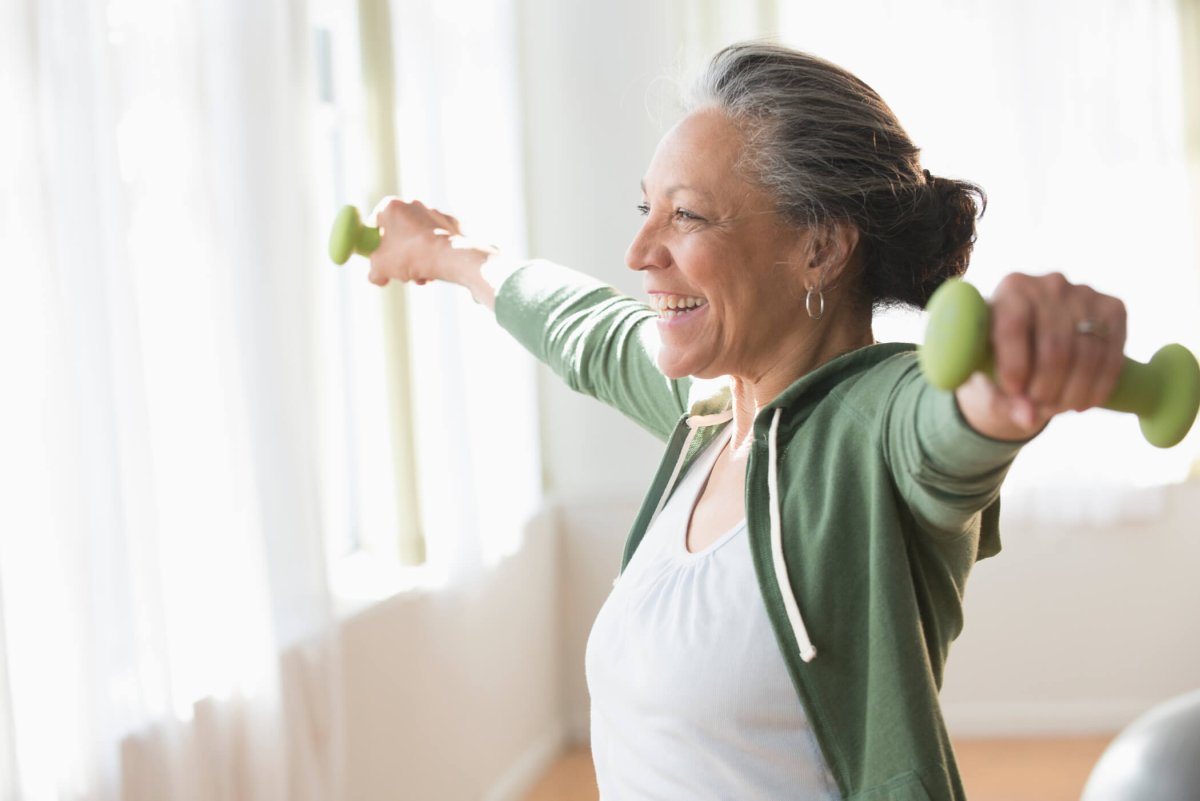Endurance, Strength, Balance and Flexibility – Each Is Important
June 14, 2024
 At just about every age, a well-rounded fitness routine is a key component of a vital and healthy life. Understanding the importance of the four primary types of exercise is crucial when deciding when and how to stay active. Imagine your body as a four-legged table. Each leg represents one of the core four: endurance, strength, balance and flexibility. If one leg is weak or missing, the table becomes unstable. Here’s a look at why each type is needed:
At just about every age, a well-rounded fitness routine is a key component of a vital and healthy life. Understanding the importance of the four primary types of exercise is crucial when deciding when and how to stay active. Imagine your body as a four-legged table. Each leg represents one of the core four: endurance, strength, balance and flexibility. If one leg is weak or missing, the table becomes unstable. Here’s a look at why each type is needed:
Aerobic exercises: Your stamina powerhouse
Aerobic exercises – sometimes known as endurance exercises – are activities that speed up your breathing and heart rate. They include things like brisk walking, running, swimming, cycling and even dancing.
Potential benefits include:
Heart Health: Endurance training strengthens the heart muscle, improving blood flow and helping to reduce the risk of heart disease.
Increased Energy: Regular aerobic activity increases your stamina and energy levels, making daily activities easier.
Weight Management: Aerobic activities burn calories and may help you maintain a healthy weight.
Mental Health: Doing these types of activities releases endorphins, or “feel good” hormones, which can help alleviate stress and enhance mood.
Strength exercises: Building your muscular fortress
Strength training involves using resistance to build muscle mass, which can help improve your balance and posture, while helping to reduce pain and stress in your joints and lower back. Related activities include lifting weights, using resistance bands, or body-weight exercises like push-ups and squats.
Potential benefits include:
Muscle Mass and Metabolism: Building muscle increases your metabolic rate, helping you burn more calories, even at rest.
Bone Health: Strength exercises are crucial for bone density and can help reduce the risk of osteoporosis.
Functional Fitness: These types of activities enhance your ability to perform everyday tasks, from lifting groceries to playing with your grandkids.
Injury Prevention: Strong muscles help protect your joints and may reduce the risk of certain types of injuries.
Balance: The key to stability
Balance exercises help improve your ability to control your body’s position, whether stationary or moving and can help prevent falls, especially as you get older. Balance activities include things like standing on one leg, tai chi, specific yoga poses and walking heel to toe.
Potential benefits include:
Fall Prevention: Especially important for older adults, good balance helps reduce the risk of falls and related injuries.
Coordination: Improves overall body coordination and stability.
Athletic Performance: Essential for athletes, balance helps enhance performance and reduce the risk of certain types of injury.
Confidence: Better balance increases confidence in movement, making you more active and engaged in various activities.
Flexibility: Optimize your movements
Flexibility exercises, such as stretching and yoga, improve the range of motion of your muscles and joints, while focusing on lengthening muscles and tendons.
Potential benefits include:
Injury Prevention: Flexible muscles and joints are less prone to injuries.
Posture and Alignment: These activities help improve your overall posture and may reduce the risk of back pain and other musculoskeletal issues.
Mobility: Enhances your ability to perform daily activities.
Stress Relief: Stretching and yoga can relax the mind and body, reducing stress and promoting mental clarity.
Always consult with your healthcare provider before starting any exercise or fitness program.
Embracing the core four — endurance, strength, balance, and flexibility — helps ensure you are taking a comprehensive approach to good health through activity. Each type of exercise offers unique benefits that together can help create a strong, resilient and vibrant body. By committing to a well-rounded fitness routine, you’re investing in a healthier, happier future. So, lace up those sneakers, grab those weights, find your balance, and stretch it out—your body will thank you.
STHS holds events to help you stay active.
Sources include health.gov and National Institute on Aging
